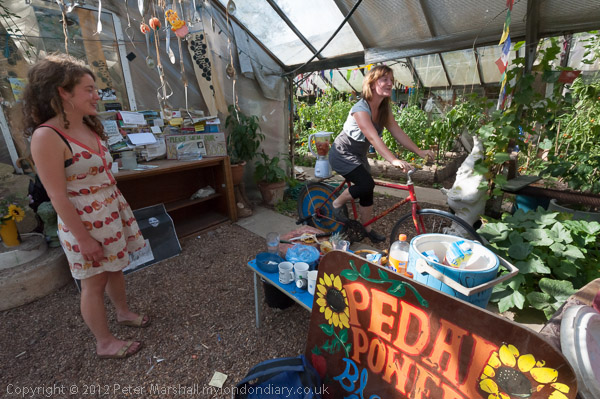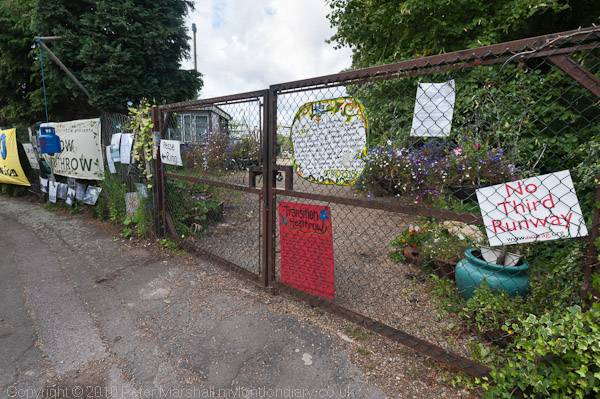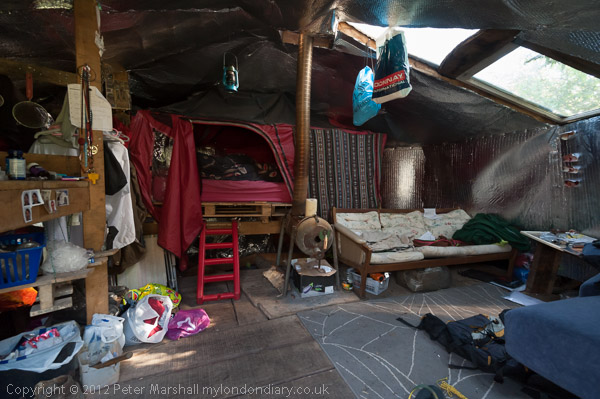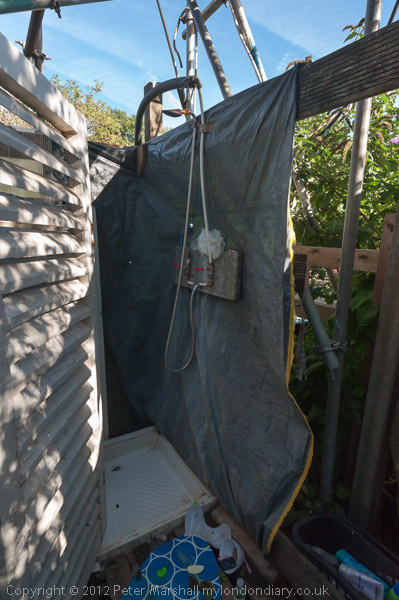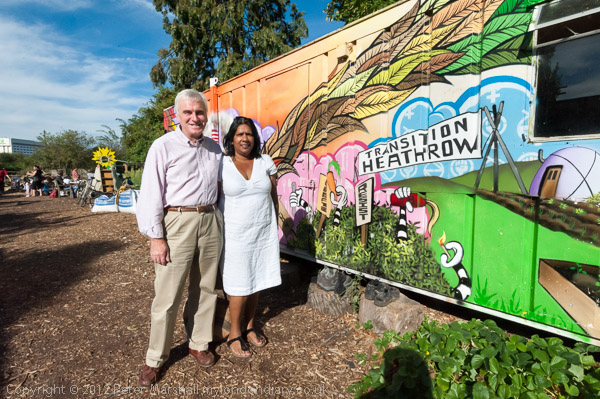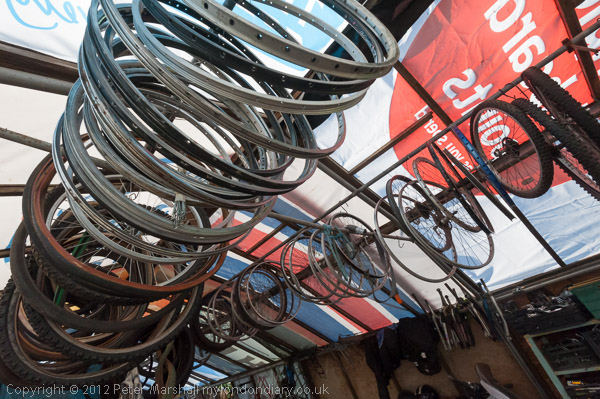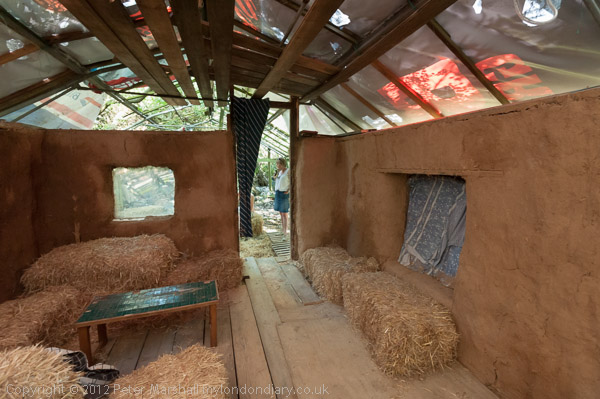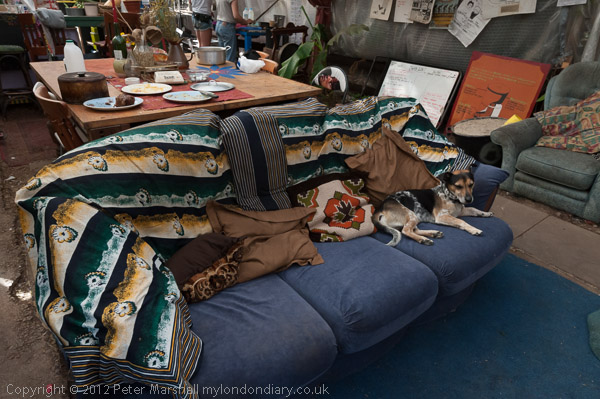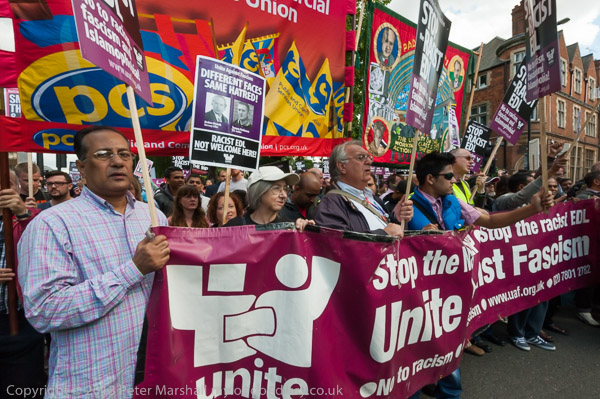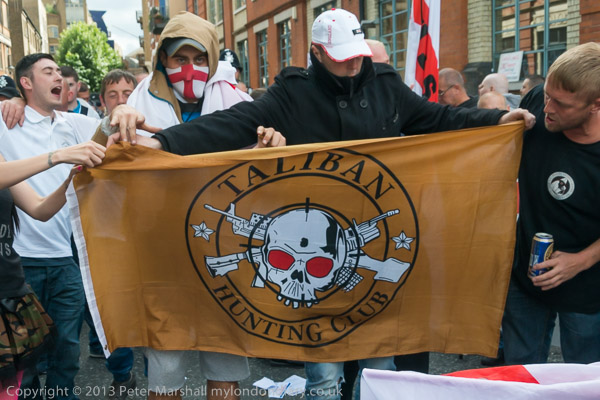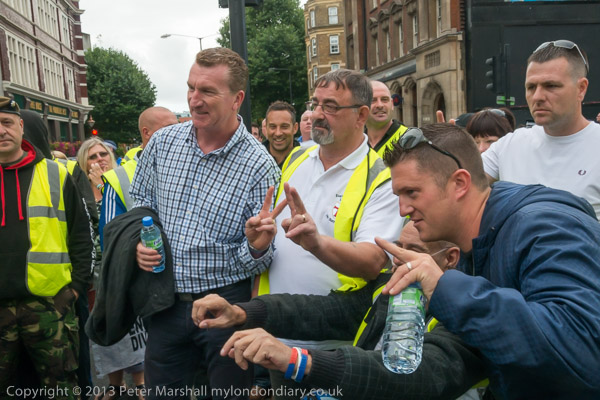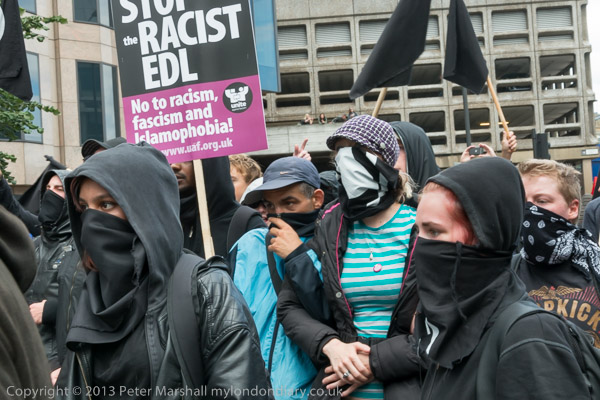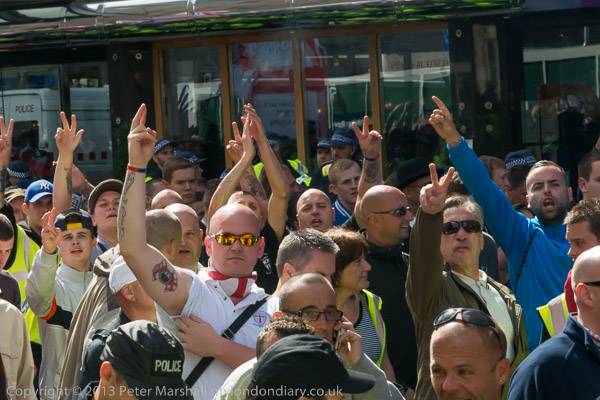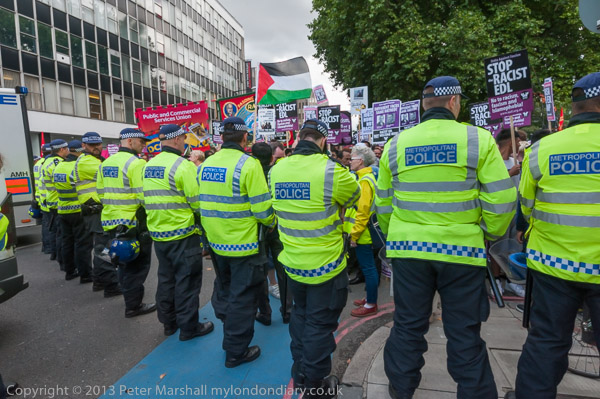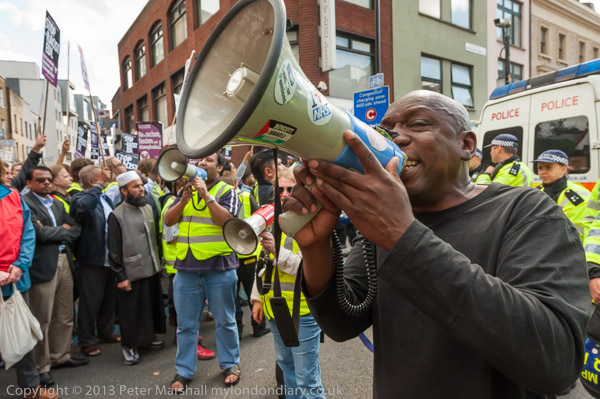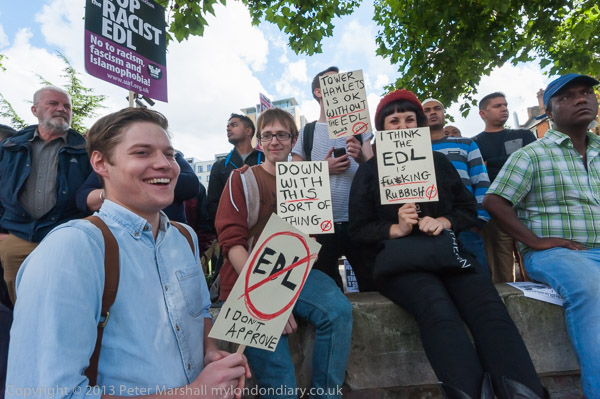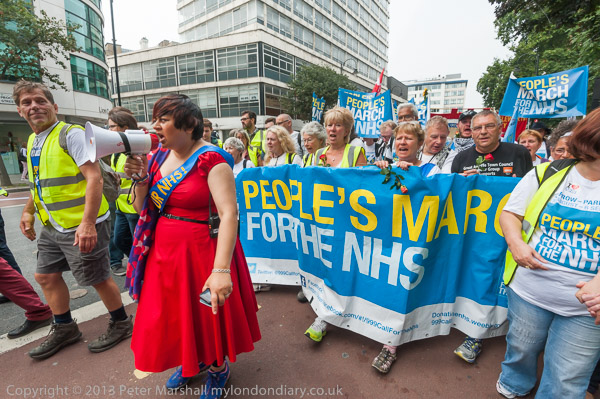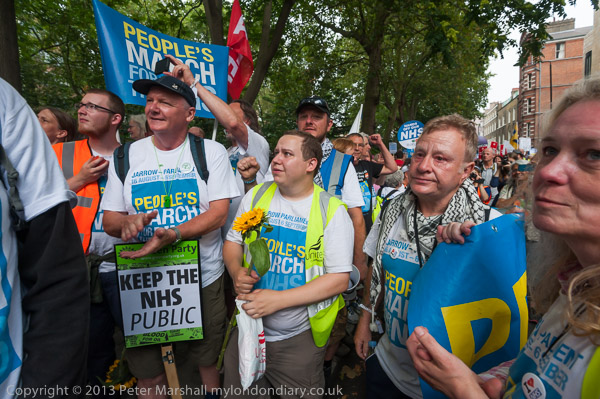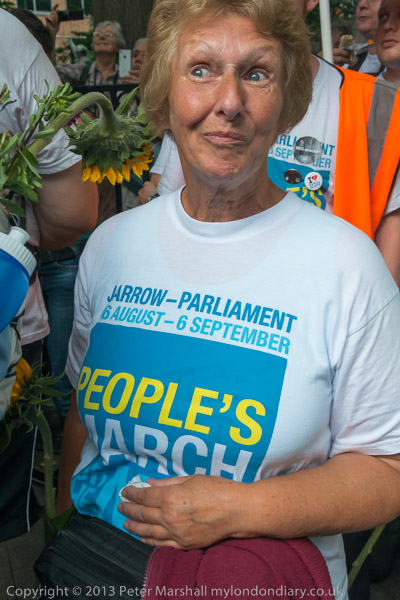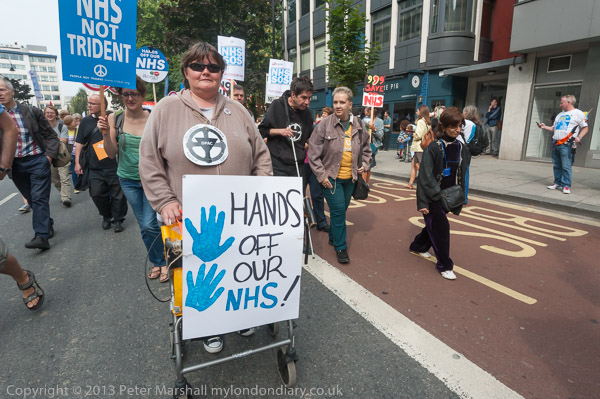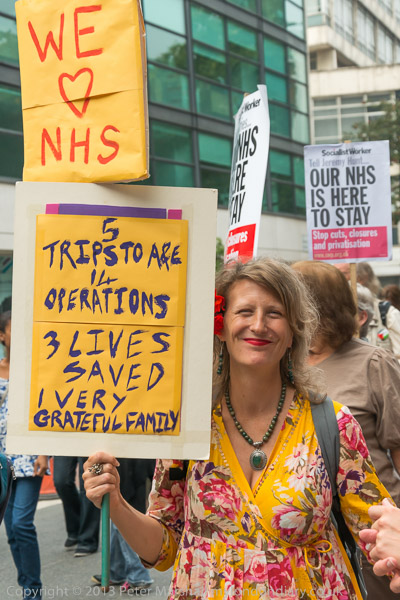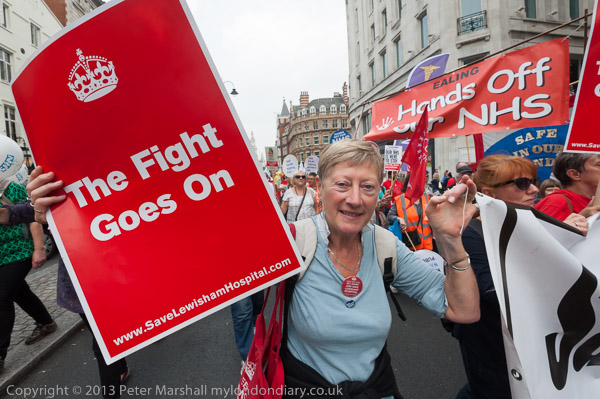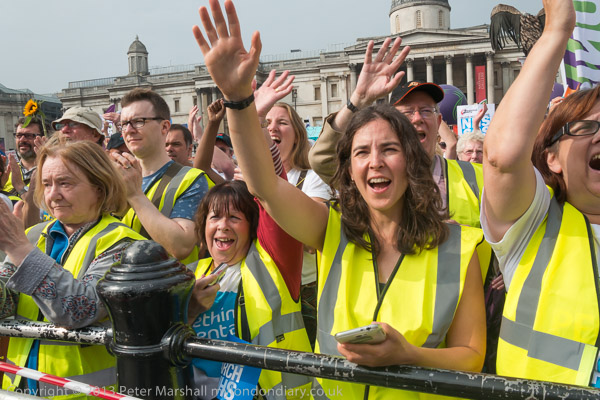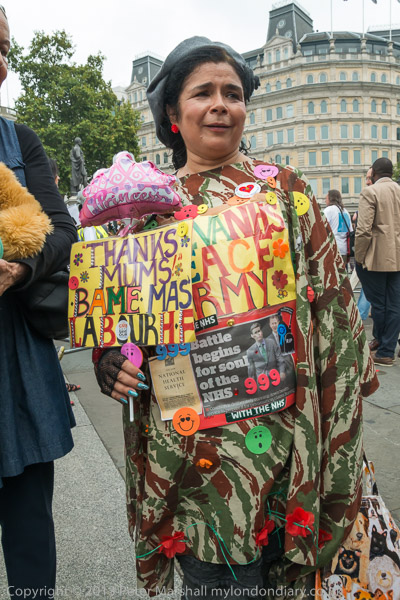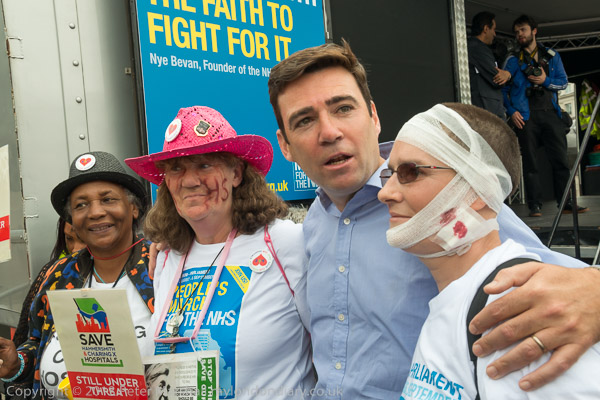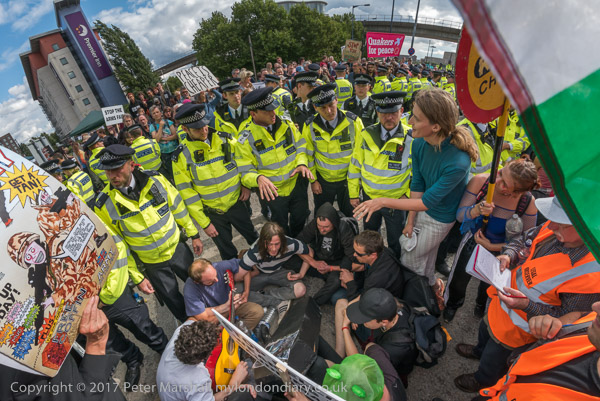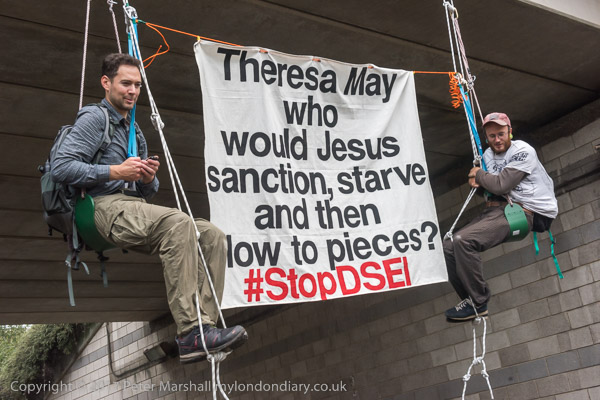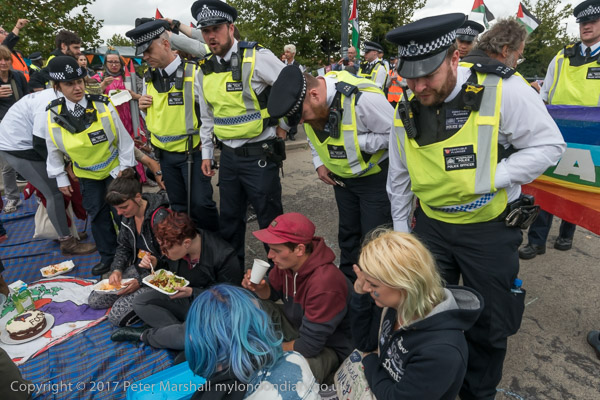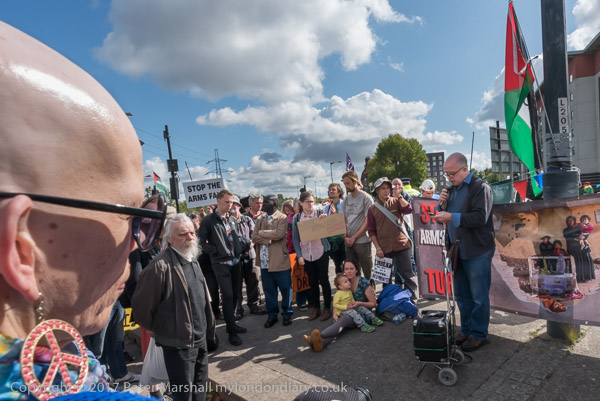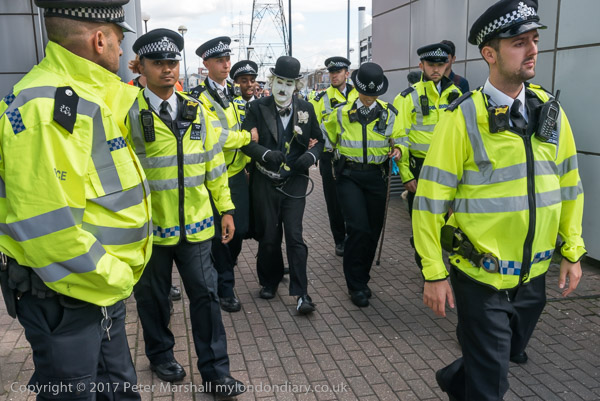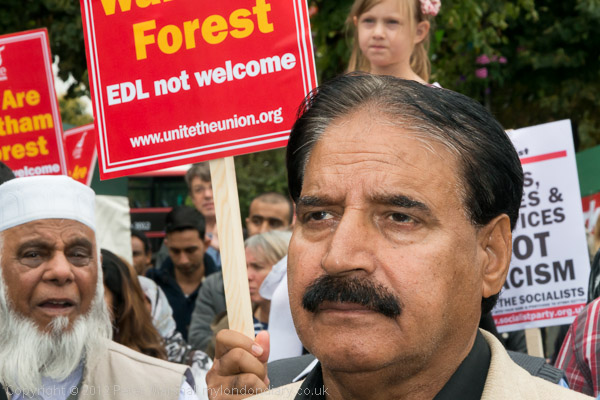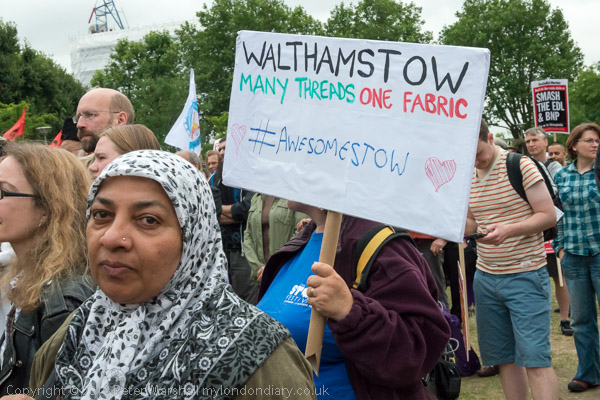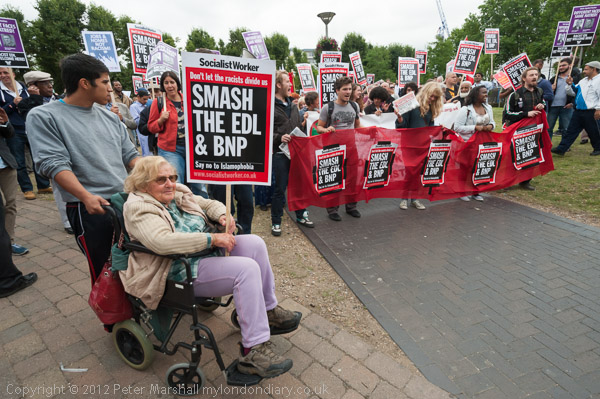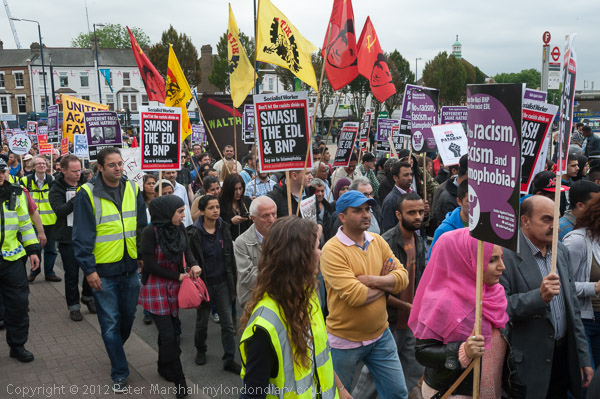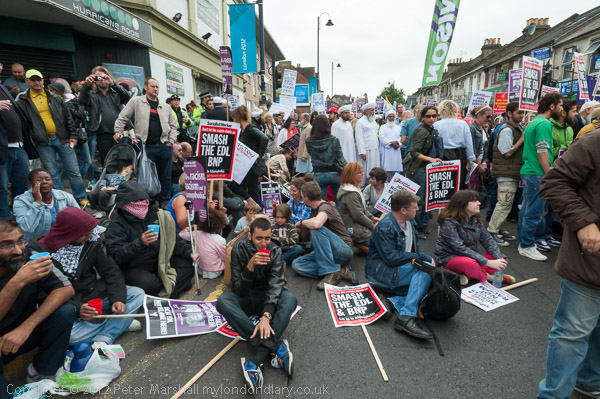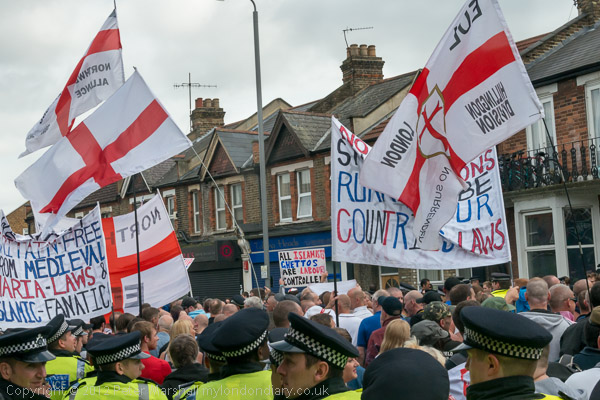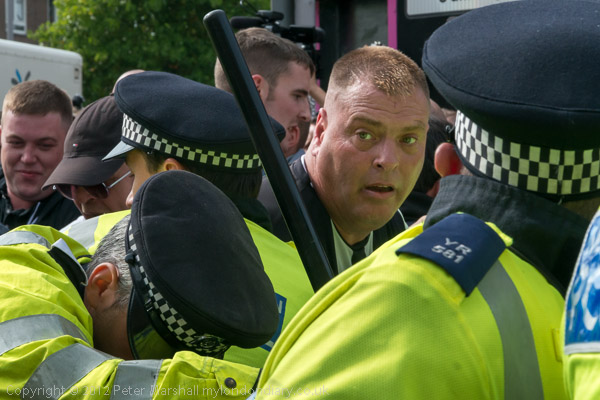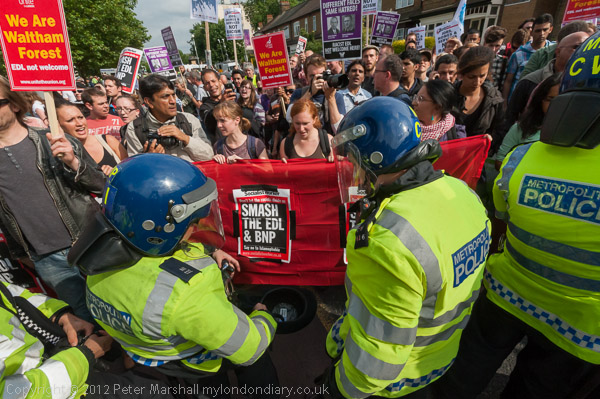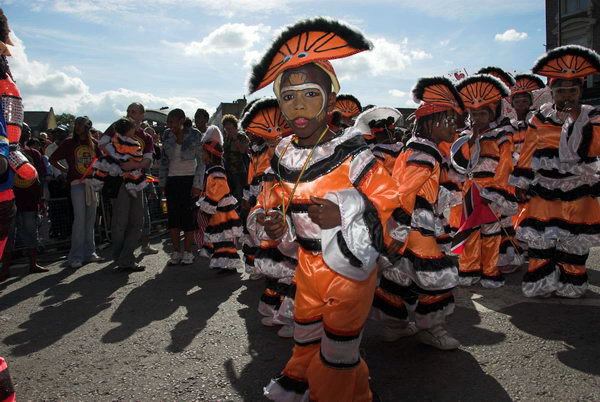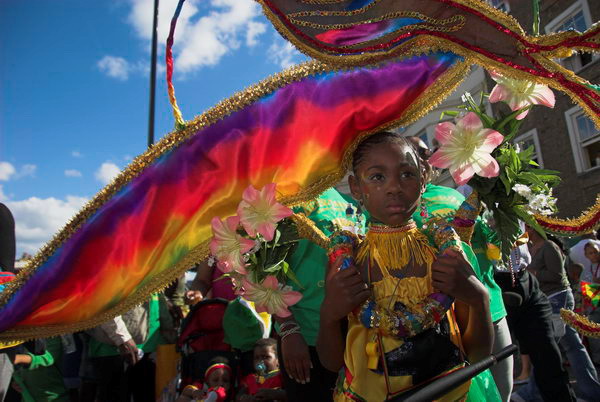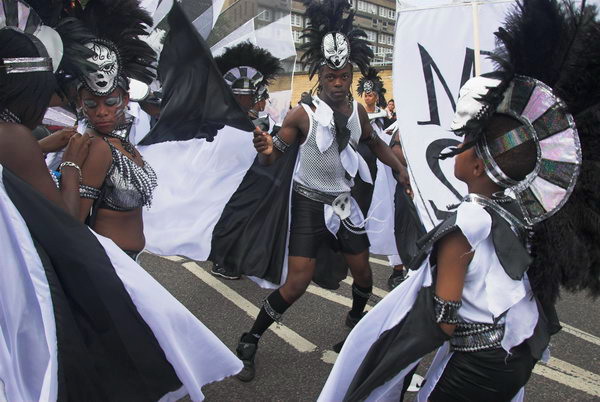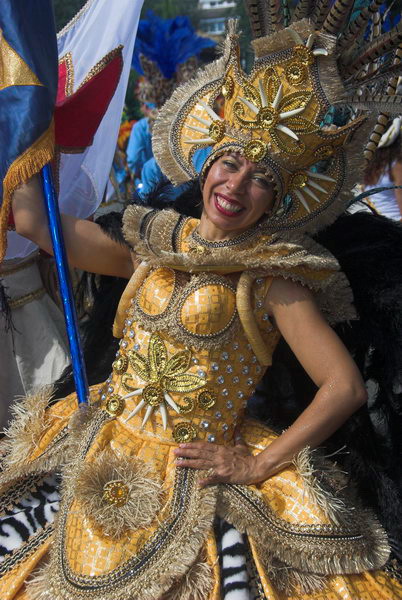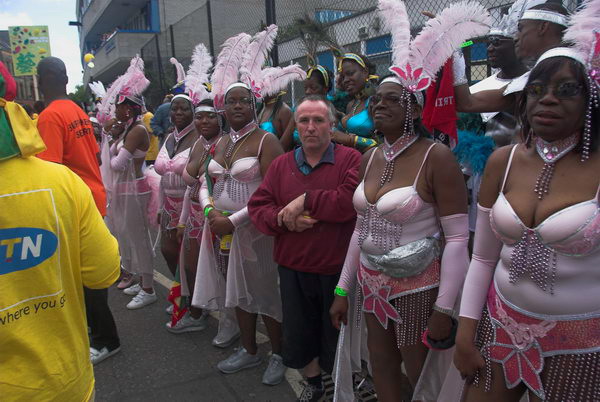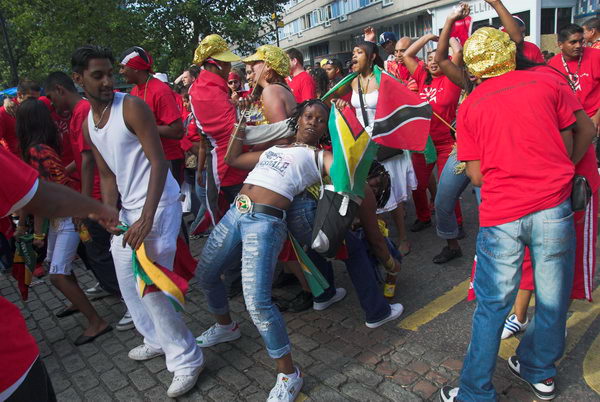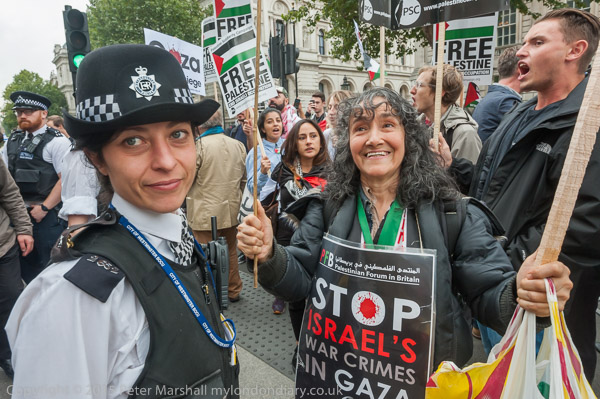
Around a thousand people came to protest against the visit to Downing Street by the then Israeli Prime Minister Benjamin Netanyahu, and several hundred came to oppose the protest and support Israel. Police struggled to keep the two groups apart.
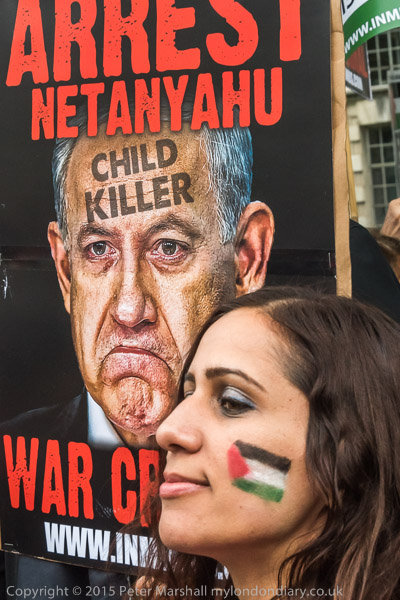
The larger group said the Netanyahu should be arrested for war crimes in the attack on Gaza last year. Many refused to go into the penned area on the opposite side of Whitehall that police had designated and it was probably too small for all of them.
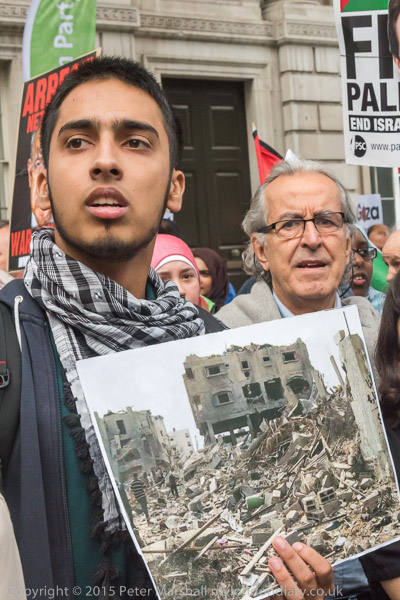
Police tried to persuade them to get off of the roadway and back onto the pavement, but were eventually overwhelmed and the protesters moved across the road to the pavement in front of the Downing St gates.
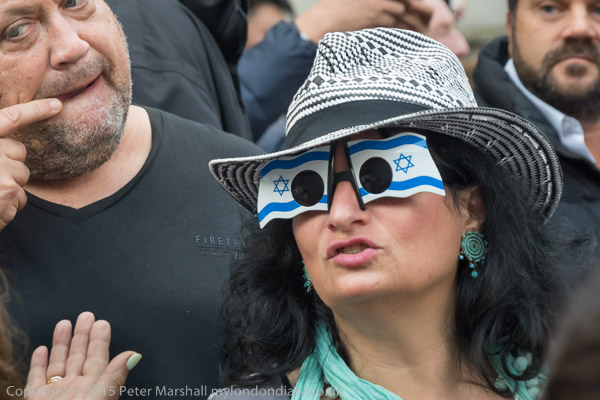
Some of the pro-Israeli protesters then moved out from their pen, and for some time the two groups faced each other across the fairly narrow way into Downing Street that police managed to keep clear. A few protesters from each side were arrested and led away, mainly when they argued aggressively with police or their opponents.
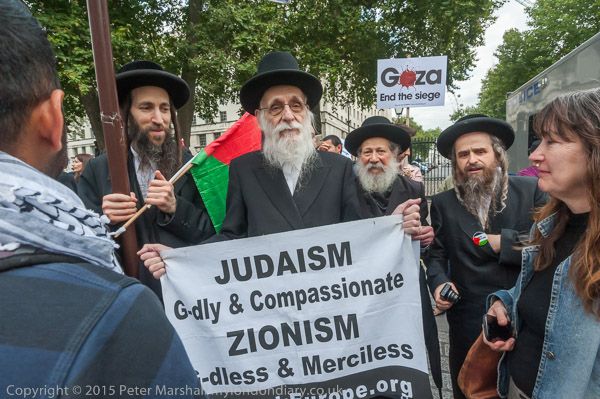
Among the protesters against Netanyahu and calling for freedom for Palestine there were as usual both Palestinians and Jews; later a group of Neturei Karta arrived, having walked from North London to join them. These ultra-orthodox Jews support Palestine and are opposed to any political state of Israel on religious grounds. One of their banners read ‘JUDAISM – G-dly & Compassionate – ZIONISM G-dless & Merciless’.
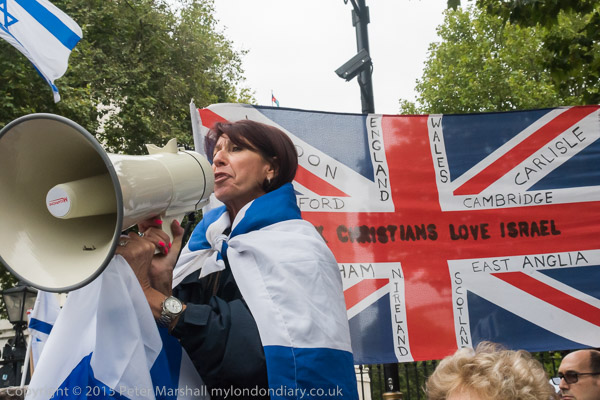
The supporters of the Israeli state included a number of right-wing Christians who came with a Union Flag with ‘UK Christians Love Israel’ on it. Like Neterei Karta they are only a small and unrepresentative group.
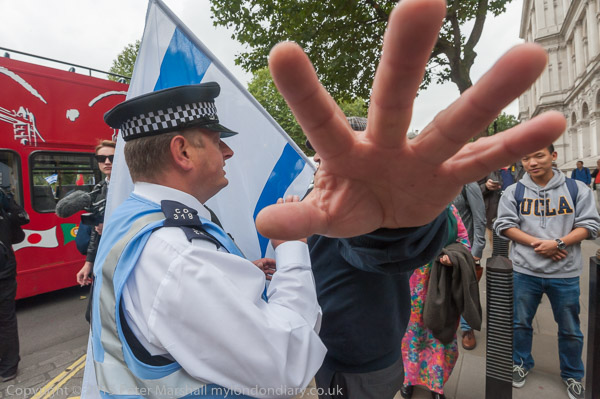
Some of the pro-Israel demonstrators were reluctant to be photographed and complained to police about photographers as well as about the other protesters who they felt police were failing to control. One man stretched out his hand to cover my lens – so of course after photographing that I made sure that I took his picture and you can see him on My London Diary.
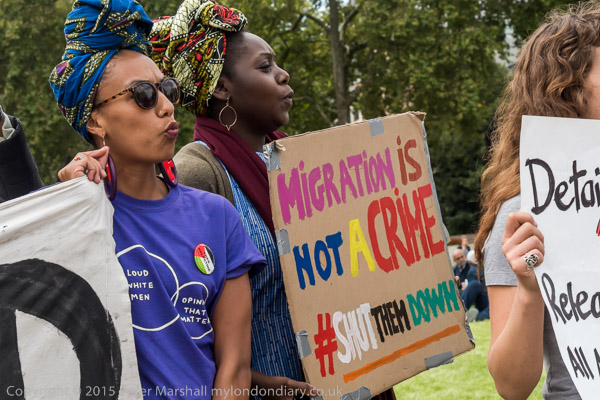
The protest was still continuing as I left to photograph another event nearby, though I suspect that Netanyahu had already arrived and been taken inside by a back entrance. Movement for Justice were in Parliament Square calling on MPs to support the proposals of the detention inquiry. They want an end to detention, fast track and immigration raids, the opening of the Calais border and an amnesty for migrants. Many of those taking part were asylum seekers who had been subjected to indefinite detention in UK detention centres after making their asylum claims.
Fight immigration detention MfJ tells MPs
Support for Israel & Netanyahu
Netanyahu visit protest – Free Palestine
